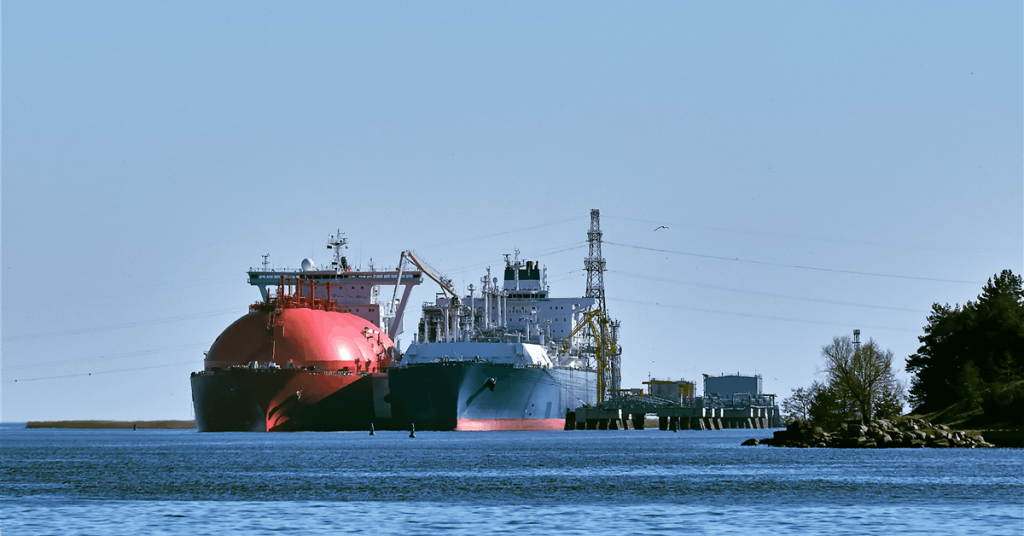Venice Energy has signed an agreement to sell its LNG project in South Australia, expected to reach a FID (final investment decision) this year, to AG&P LNG.
“This follows a complex series of negotiations over the past eight months after the signing of a binding term sheet between the two companies in October last year and a full-formed Investment Agreement that was settled and signed on Monday”, Adelaide-based Venice Energy said in a statement on its website.
The project in Port Adelaide will have a floating storage and regasification unit, two wharfs, loading arms, cryogenic piping, pumps and associated infrastructure, according to Venice Energy.
“The terminal has already been approved by the SA government and site enabling works were completed earlier this year”, the company said.
Venice Energy chair Kym Winter-Dewhirst said, “Firstly, the regasification terminal will provide energy security to South Australia from 2028 onwards and secondly help alleviate forecast shortfalls in the gas supply market along the southeast of Australia”.
Dubai and Singapore-based AG&P LNG, majority-owned by Florida-based Nebula Energy, agreed last year to acquire Venice Energy.
“AG&P LNG will build the Outer Harbor LNG import terminal by conversion of a 145,000 cbm LNGC to a Floating Storage and Regasification Unit with a peak send out capacity of 400 mmscfd”, AG&P LNG and Venice Energy said in a joint statement October 24, 2024.
“We are excited to enter the Australian market with our decision to acquire Venice Energy”, AG&P LNG executive chair Peter Gibson said at the time. “Venice Energy has got the Outer Harbor LNG import terminal project shovel-ready with all key permits in place, offering a key advantage over other LNG import terminal proposals in the region”.
Venice Energy previously said gas imported by the project could be delivered to the Iona underground gas storage facility.
In July 2024 a 25-year agreement was announced between Snowy Hydro and the owner of the storage facility, Lochard Energy, to support Snowy Hydro’s gas power generation.
“The long-term Lochard storage deal will allow Snowy Hydro to utilize stored gas when required to operate its gas-fired power stations”, Snowy Hydro said in a press release July 15, 2024.
Winter-Dewhirst, the Venice Energy chair, said in a statement at the time, “This is a good move by the federal government through their Snowy Hydro business, as it will ensure enough gas can be strategically stored at Iona and thereby prevent state-wide blackouts as domestic gas supplies rapidly decline in the next few years”.
“This raises the question of where the gas will come from. It will come from our terminal at Port Adelaide via the 687-kiometer SEA Gas pipeline directly linking Adelaide to Iona”, Winter-Dewhirst said.
“We will deliver around 60 PJs per year directly to Iona. We will supply an additional 30 PJs to the Port Campbell pipeline, with around 20 PJs remaining in the South Australian network.
“Ultimately, what matters is that firstly, enough new gas supplies can be sourced to cover the forecast shortfalls; and secondly, that this imported gas is competitively priced compared to the anticipated higher costs of domestic gas as local production declines over the next few years.
“We firmly believe that both of these factors can be met from our $300 million LNG import terminal at Port Adelaide, ensuring both security of supply and cost-effective gas pricing to support the vital transition away from coal towards a net-zero future over the coming years”.
To contact the author, email jov.onsat@rigzone.com
What do you think? We’d love to hear from you, join the conversation on the
Rigzone Energy Network.
The Rigzone Energy Network is a new social experience created for you and all energy professionals to Speak Up about our industry, share knowledge, connect with peers and industry insiders and engage in a professional community that will empower your career in energy.
element
var scriptTag = document.createElement(‘script’);
scriptTag.src = url;
scriptTag.async = true;
scriptTag.onload = implementationCode;
scriptTag.onreadystatechange = implementationCode;
location.appendChild(scriptTag);
};
var div = document.getElementById(‘rigzonelogo’);
div.innerHTML += ” +
‘‘ +
”;
var initJobSearch = function () {
//console.log(“call back”);
}
var addMetaPixel = function () {
if (-1 > -1 || -1 > -1) {
/*Meta Pixel Code*/
!function(f,b,e,v,n,t,s)
{if(f.fbq)return;n=f.fbq=function(){n.callMethod?
n.callMethod.apply(n,arguments):n.queue.push(arguments)};
if(!f._fbq)f._fbq=n;n.push=n;n.loaded=!0;n.version=’2.0′;
n.queue=[];t=b.createElement(e);t.async=!0;
t.src=v;s=b.getElementsByTagName(e)[0];
s.parentNode.insertBefore(t,s)}(window, document,’script’,
‘https://connect.facebook.net/en_US/fbevents.js’);
fbq(‘init’, ‘1517407191885185’);
fbq(‘track’, ‘PageView’);
/*End Meta Pixel Code*/
} else if (0 > -1 && 72 > -1)
{
/*Meta Pixel Code*/
!function(f,b,e,v,n,t,s)
{if(f.fbq)return;n=f.fbq=function(){n.callMethod?
n.callMethod.apply(n,arguments):n.queue.push(arguments)};
if(!f._fbq)f._fbq=n;n.push=n;n.loaded=!0;n.version=’2.0′;
n.queue=[];t=b.createElement(e);t.async=!0;
t.src=v;s=b.getElementsByTagName(e)[0];
s.parentNode.insertBefore(t,s)}(window, document,’script’,
‘https://connect.facebook.net/en_US/fbevents.js’);
fbq(‘init’, ‘1517407191885185’);
fbq(‘track’, ‘PageView’);
/*End Meta Pixel Code*/
}
}
// function gtmFunctionForLayout()
// {
//loadJS(“https://www.googletagmanager.com/gtag/js?id=G-K6ZDLWV6VX”, initJobSearch, document.body);
//}
// window.onload = (e => {
// setTimeout(
// function () {
// document.addEventListener(“DOMContentLoaded”, function () {
// // Select all anchor elements with class ‘ui-tabs-anchor’
// const anchors = document.querySelectorAll(‘a .ui-tabs-anchor’);
// // Loop through each anchor and remove the role attribute if it is set to “presentation”
// anchors.forEach(anchor => {
// if (anchor.getAttribute(‘role’) === ‘presentation’) {
// anchor.removeAttribute(‘role’);
// }
// });
// });
// }
// , 200);
//});

